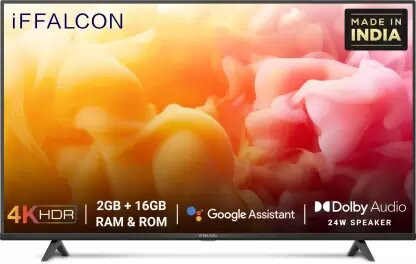The TV industry has quite frankly become more innovative, and with it, TV technology has been ever-changing. The most recent development in this sector includes a Smart TV. Smart TVs are the perfect companion to your Smart Home and, indeed, the future.
There are quite a few advantages you can enjoy with a smart TV when compared to the regular models. If you are new to the market or thinking of investing in a smart TV, this article is the perfect read for you. Here you will find everything you need to know about smart TVs, starting from what they are to what they can do.
What Do You Understand By A Smart TV?
Much like mobile phones and other similar devices, a smart TV is something that enhances accessibility and convenience for the user. It allows you to do certain things like browsing the web or streaming video on demand, which a standard television set, might not allow you to do. Basically, a smart 4k Android TV allows you to connect it to the home internet.
This gives it the capability of doing everything that your computer can do, but on a much bigger and better screen. However, if you are not using a WI-FI connection at home, that is not a deal-breaker since most intelligent TVs have an Ethernet port. You can simply plug the Ethernet cable into the TV, and it will be directly connected to your television set.
What Are Some Of It's Features?
Now that you understand what a smart TV is, it is time to learn more about its features. A smart TV comes with enough features that suit all entertainment types. Listed here are some features that make it a must-buy in today’s digitized era.
1. Browse The Web:
With the internet-connected, the world is your scope. You can use this television set, just like you would a computer. You can visit any website you want, watch movies and listen to music online. For instance, if your phone is out of charge or you are on a call, you can visit your social media pages directly from the television. This only adds to the convenience and makes life easier for you.
2. Stream Online:
Another great feature of a smart TV is that you can stream your TV series and movies online. While on older television sets, you would have to download the movie from elsewhere, get a storage device and plug it into the TV to play; all of that has changed.
The cumbersome process has now been made easy with internet access. With your new Android smart TV, you can simply log into an online streaming service like Netflix or Amazon Prime Video and play your favourite movies directly on the television set. As long as the service provider has made an application for the TV, you will be able to access it directly.
3. Voice Or Motion Control:
Out of the several intelligent TV models you can find in the market, you will find some that allow you to control it via motion or voice. Voice assistants have clearly become a massive part of everyone’s daily routine. Starting from setting alarms to creating your shopping list, the ease and convenience it provides make voice assistants are instead needed addition to your daily life.
Similarly, intelligent TVs come with the same capabilities. While full HD Android TV most commonly uses Google Assistant, you can also find other similar voice assistants, depending on the brand you choose.
With just one click of the button, you can search for anything or open any app you want on your television set. However, this is not a given feature and might cost you extra money. Make sure to check with the retailer to know if this feature is included in the model you are planning to buy.
These are some of the benefits you will surely love in your new Smart TV. Smart TVs are the future, and you should surely invest in one if you are an avid TV watcher. However, before you make the purchase, always make sure to check the reputation of the brand and the user reviews of the product model.

